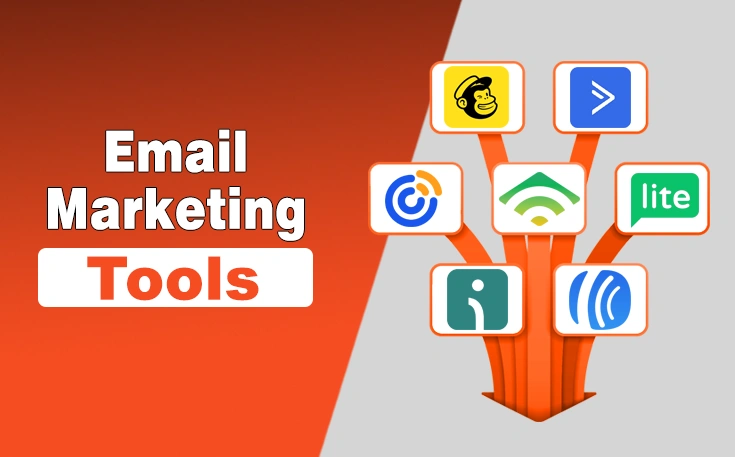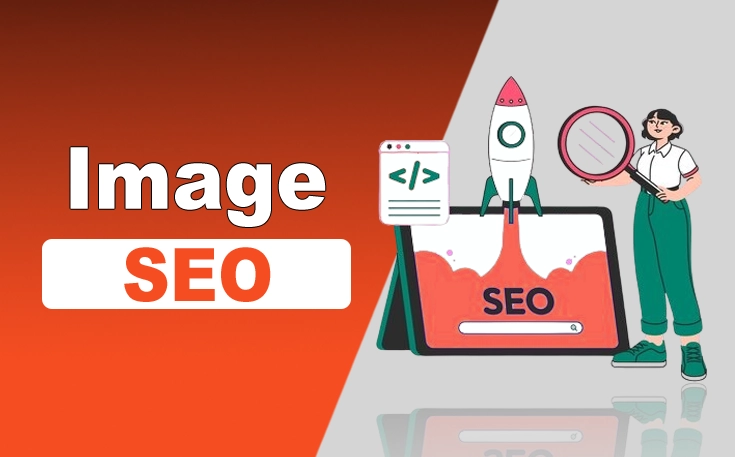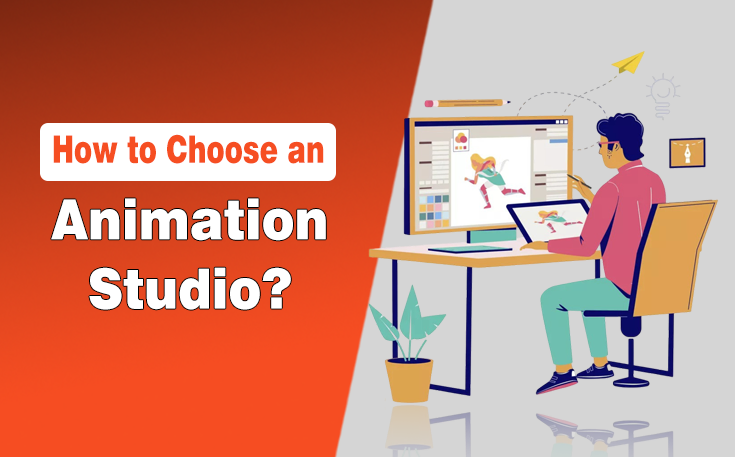Let me ask you a simple question: when you visit a website, how long does it take for you to decide whether you’ll stick around or hit the back button? Probably just a few seconds, right? That’s the power of first impressions—and they’re almost always shaped by design. But here’s the thing: web design is about so much more than just looking good.
It’s about usability, structure, trust, speed, and SEO. In this guide, I’m going deep into what makes web design essential for any business that wants to thrive online. We’ll explore how the right design decisions can increase engagement, lower bounce rates, improve rankings, and build lasting customer loyalty.
What Is Web Design?
Most people think web design is all about choosing colors, fonts, and images. But real web design goes far beyond that.
“It is the process of planning, conceptualizing, and arranging content on your website in a way that makes it usable, accessible, and engaging for users.”
It is where form meets function.
Web design includes layout structure, visual aesthetics, user experience (UX), site navigation, content hierarchy, mobile responsiveness, and even SEO implementation. In short, it’s everything that determines how a user interacts with your site—and whether they trust your brand enough to take action.
I always think of web design as the bridge between your business goals and your audience’s needs. A poorly designed site can push users away, while a great one can turn visitors into customers.
Why Web Design Matters for Your Business?
Let’s get something straight—web design isn’t just a creative or technical decision. It’s a business decision. A powerful one. When done right, it directly affects your bottom line.
It Builds Trust and Credibility
A sleek, modern design signals professionalism. It shows that you care about your brand and your customers. On the flip side, a clunky, outdated site instantly raises red flags. I’ve seen users exit within seconds simply because a site “looked sketchy.” Good design creates immediate trust, which is crucial for convincing someone to buy, sign up, or engage further. Law firms’ websites, like Bye, Goff & Rohde demonstrate how combining strong content with professional visuals helps build credibility and clearly communicate expertise to potential clients.
It Boosts User Engagement
Great design helps people find what they need quickly—and when users find what they’re looking for, they stick around. That extra time on your site leads to more page views, more interaction with your brand, and more conversions. Engaging visuals, logical flow, and smooth navigation make people want to explore more.
It Reduces Bounce Rate
If users land on your site and instantly leave, that’s called a bounce, and how many users do that is termed as bounce rate—and it usually means your site didn’t deliver what they expected. Maybe it loaded too slowly. Maybe it was confusing. It may look outdated.
A well-designed site solves those issues. Fast-loading pages, clear layouts, and intuitive navigation all help keep people engaged longer.
It Enhances Your SEO
Web design directly affects SEO. Google looks at usability signals like mobile-friendliness, loading speed, and bounce rate when ranking your site. If your design makes users stay and engage, your rankings improve.
Structured content, readable fonts, and fast image loading aren’t just user-friendly—they’re search engine-friendly, too.
Key Elements of Effective Web Design
Creating a beautiful site isn’t enough. It has to be functional, goal-oriented, and user-centric. These are the core elements I focus on when building high-performing websites.
1 – User-Friendly Navigation
Navigation is the backbone of user experience. If people can’t figure out how to move through your site, they won’t stick around. Simple, intuitive menus, logical page hierarchies, and clearly labeled links make the entire experience smoother.
I always recommend keeping the main menu lean—focus on the essentials—and group similar content in dropdowns to reduce clutter.
2 – Mobile Responsiveness
With over half of all web traffic coming from mobile devices, having a responsive design isn’t optional—it’s essential. A responsive website adapts to different screen sizes and device types, offering a seamless experience whether your visitor is on a phone, tablet, or desktop.
I test every layout on multiple screen sizes to ensure text remains readable, images scale correctly, and navigation stays functional.
3 – Clear and Consistent Branding
Branding is how your audience remembers you—and consistency across your website helps reinforce that identity. I always use a unified color scheme, a consistent set of fonts, and strategic placement of logos and brand messaging.
Whether someone lands on your homepage or your contact page, they should feel the same brand tone and trust throughout.
4 – Fast Loading Speed
Every second counts when it comes to page speed. A slow-loading website doesn’t just frustrate users—it tanks your SEO and kills conversions. I compress images for Image SEO, use image extender tools for optimal dimensions, eliminate unnecessary code, and use browser caching.
Additionally, fast hosting can help keep load times under three seconds. Fast sites feel smooth and responsive, which makes people more likely to engage.
5 – Effective Call-to-Actions (CTAs)
A website without strong CTAs is like a store with no cash register. You have to guide users toward taking the next step. Whether it’s “Book a Demo,” “Download the Guide,” or “Contact Us,” a great CTA is clear, bold, and strategically placed.
I always put CTAs where users are most likely to make decisions—on homepages, product pages, and after valuable content.
6 – High-Quality Content and Imagery
Design and content work hand in hand. Your site could look great, but without clear, compelling copy and visuals, users won’t be convinced. I focus on creating high quality content that informs, entertains, or solves a problem.
Further, when these contents are paired with professional imagery, they reinforce your message. Every word and every image should earn its place.
7 – SEO Optimization
SEO-friendly design makes your site visible to the right people at the right time. That means using heading tags properly (H1, H2, H3), structuring URLs with keywords, writing descriptive alt tags for images, and ensuring your site loads fast and performs well. Good SEO starts at the design stage—not after the site is built.
Understanding Layout and Structure in Web Design
Let’s dig into the mechanics behind what makes a website actually work—from layout to structure.
What Is Layout?
Layout is all about the arrangement of elements on your web pages. It determines where your text, images, buttons, and forms appear—and how users visually digest them.
A good layout guides the eye naturally. It uses spacing, contrast, and visual hierarchy to focus attention and reduce overwhelm.
Key Elements of Layout
- Header: Includes your logo, main navigation, and sometimes a CTA or search bar.
- Main Content Area: Where blog posts, product descriptions, or service info lives.
- Sidebars: Optional, but can house related content, email opt-ins, or promotions.
- Footer: Contains contact info, legal disclaimers, social links, and additional nav links.
What Is Structure?
Site structure is how all your pages fit together. It affects both user experience and SEO. A well-structured site is easy to explore and easy to index by search engines.
Key Elements of Structure
- Navigation Menus: Clearly show the hierarchy of pages (like Home > Services > Web Design).
- Internal Linking: Guides users to related content and keeps them engaged longer.
- Content Hierarchy: Helps prioritize important information so users find it fast.
When structure is tight and logical, it builds user confidence. They know where to go, how to get there, and what to expect.
How Color Schemes Impact Branding?
Color isn’t just decorative—it’s emotional and psychological. It affects how users feel about your brand, and how they remember you.
Builds Brand Identity
Color consistency reinforces your brand. Think of Coca-Cola’s red or Facebook’s blue—they’re instantly recognizable. I always pick colors that reflect your values. Soft neutrals feel calming and professional. Bold colors feel energetic and cutting-edge.
Increases User Experience
Color can help highlight important features. A contrasting button color makes a CTA pop. A subtle background color helps section off content and improve readability. It’s not just about beauty—it’s about usability.
Evokes Emotion
Colors trigger emotional responses. Blue builds trust. Green feels natural. Orange creates urgency. I use color psychology to support your site goals, whether that’s to sell, educate, or inform.
The Importance of Typography in Web Design
Typography doesn’t get enough credit—but it’s one of the most important design decisions you can make.
Improves Readability
Web users scan content more than they read every word. That means your typography needs to be easy on the eyes. I stick to 16px or larger for body text, avoid overly stylized fonts for paragraphs, and use good contrast between text and background.
Creates a Visual Hierarchy
Fonts can guide users just like visuals can. Headers should be bold and large. Subheadings a bit smaller. Body text should flow smoothly. This structure helps users find key points quickly.
Reflects Brand Personality
Typography has tone. Serif fonts feel traditional. Sans-serif fonts feel modern. Handwritten fonts feel playful. I choose fonts that reflect your voice and support the kind of experience you want to offer.
Creating User-Friendly Navigation for Better UX
When users land on your site, they shouldn’t need to think about where to click next. That’s why user friendly navigation is one of the key components of web design, and it should be taken care of properly. Below are a few points to consider.
Keep It Simple and Intuitive
The fewer clicks it takes to find something, the better. I stick with clear, familiar labels and keep top-level menus focused on your most important pages. No one wants to decode jargon just to find your services.
Structure Your Navigation
I use dropdowns and nested menus to group related content logically. A clear flow—from homepage to category to detail pages—helps users go deeper without getting lost.
Make It Responsive and Accessible
I always make sure menus work across all devices. That means large touch targets, swipe-friendly navigation, and accessibility features like keyboard support and screen reader compatibility.
Mobile Responsiveness: Why Your Website Must Adapt to All Devices
In today’s world, people use whatever device is most convenient—smartphones on the go, tablets on the couch, or laptops at their desks. I always say your website cannot assume visitors will only arrive from a desktop.
That is why mobile responsiveness is not optional anymore. It is essential. A responsive website automatically adjusts its layout to fit any screen size, providing a smooth experience whether someone is using a phone, tablet, or computer.
When done right, mobile responsiveness keeps users engaged and happy. When ignored, it drives them away. Let me walk you through why this matters so much.
Users Expect a Seamless Experience Across All Screens
Most people today switch between devices throughout the day. If your website does not adjust accordingly, users will leave—and fast. Here is why that seamless experience is key.
Responsive Layouts Eliminate the Need for Zooming or Scrolling
There is nothing more frustrating than pinching and zooming to read a page on a smartphone. I design mobile-responsive websites so they naturally fit smaller screens. Text becomes readable, images scale properly, and buttons are easy to tap.
That way, visitors can browse your site without the awkward horizontal scrolling or squinting. Everything feels like it was made just for the device they are on.
Mobile-First Design Prevents User Drop-Off
When people have a bad experience on mobile, they do not stick around. They back out, bounce away, and find a competitor whose site actually works. I have seen businesses lose valuable leads simply because their site was not optimized for mobile.
Whether it is a clunky layout or a button that is too small to click, those little frustrations add up. Making your website mobile-friendly is how you keep people on the page.
Mobile Responsiveness Drives Real Business Results
Sure, a responsive website makes users happy. But it also supports your long-term growth. I treat mobile responsiveness as a core part of both user experience and business performance. Here is how it plays into your bigger strategy.
Better SEO Performance from Search Engines
Google pays attention to how mobile-friendly your website is. In fact, mobile usability is one of the factors that can impact your search rankings. When I build or review a site, I always make sure it meets mobile standards so it has the best chance of showing up in search results.
The more accessible your site is to mobile users, the better it performs in search.
Increased Traffic and Conversions
A mobile-responsive website invites more people in. Whether they are discovering your business through a social media link, a search engine, or an email on their phone, the first impression counts.
I have found that users are more likely to convert—whether that means signing up, calling, or buying—when they can use the site easily from any device. Responsive design is not just about looking good. It directly impacts how well your website works for your goals.
How High-Quality Content and Imagery Improve Web Design?
When it comes to designing a website that genuinely connects with users, it is not just about looking good. I have learned that people stay and convert when the content speaks directly to their needs and the visuals feel natural and professional.
That is why I believe that combining high-quality written content with powerful imagery is a game-changer. These two elements do not work in isolation. Instead, they complement one another to build trust, create emotional appeal, and guide users through your website experience.
Let me show you exactly how content and images play their roles in effective web design.
1. Great Content Adds Value and Builds User Trust
When you think of web design, you probably imagine colors, layouts, and graphics. But content is what actually speaks to your visitors. I always tell people that even the most beautiful website falls flat without clear, useful words. Here is what makes content so critical.
It Educates and Solves Problems
Every website needs to answer a user’s questions before they even have to ask them. Whether it is a product page, a service description, or a blog post, I write with a purpose. My goal is to guide the visitor through a journey—explaining features, solving problems, and showing why something matters.
When content is well-structured and valuable, users stay longer and are more likely to convert.
It Shapes the Voice of Your Brand
Words are not just tools to explain things. They represent your brand. I always use a tone that reflects the personality of the business. Is the brand friendly and casual? Then I speak like that. Is it more formal and professional? Then I adjust my language.
The tone of your content creates consistency, which helps users feel like they know and trust your brand.
It Improves SEO and Keeps Users on Site
Search engines love great content. But more importantly, so do real people. I focus on writing for humans first. That naturally improves SEO performance. When someone lands on a blog that actually answers their question or a service page that clearly explains benefits, they are likely to stick around.
That increased dwell time tells Google that your site is worth showing to others.
2. Powerful Imagery Enhances the User Experience
Now that we have strong content, what do we pair it with? High-quality visuals. I have seen websites come to life with the right set of images. But it is not about using photos just to fill space. Great images serve a real purpose—and I make sure they always support the message.
Visuals Create Immediate Appeal
The first impression of a website is almost always visual. When I include crisp, high-resolution images that are aligned with the brand, users instantly feel a level of trust.
It tells them that the site is professional, thoughtful, and reliable. On the flip side, poor-quality images make a site feel outdated or sloppy.
Photos Make Text Easier to Absorb
Walls of text turn visitors away. That is why I use visuals to break up content and give people breathing room. Whether it is a lifestyle image next to a product description or an infographic explaining a service, images help people process the information faster.
They also increase comprehension and engagement.
Images Reinforce Brand Identity
Consistent visuals do more than look pretty—they solidify your brand identity. Every photo I choose or recommend has to reflect the same mood and message as the content.
Whether that means a sleek, minimalistic product shot or a warm, community-focused team photo, the imagery reinforces what your brand stands for.
3. Content and Imagery Work Together as a Unit
Some people try to choose between content and design, but I believe that the best websites do not separate them. They work in harmony. When I create a page, I look for opportunities where text and visuals support each other. This synergy elevates the entire user experience.
Design Feels More Natural and User-Friendly
When content and images are balanced, your layout feels seamless. I make sure that the flow from headline to paragraph to visual feels intuitive. Users do not have to think too hard.
They just scroll naturally, absorbing the story as they go. That smooth experience keeps them engaged longer.
Conversion Rates Get a Natural Boost
Good design guides users toward actions. Great content gives them the confidence to take them. I blend the two so users are not just looking at your site—they are clicking buttons, filling out forms, and making purchases.
Clear copy supported by meaningful visuals makes calls-to-action more effective and persuasive.
Final Thoughts
To wrap it up, web design isn’t just about making your site look nice. It’s about crafting an experience—one that guides visitors, builds trust, enhances visibility, and drives results. From smart layouts to responsive design, compelling content, and thoughtful visuals, every element of your website plays a role in whether someone clicks, reads, buys, or leaves.
I’ve seen businesses transform just by upgrading their design. So if you’re serious about growing your presence online, make design a priority. It’s not just how your site looks—it’s how it works.
Need custom app with amazing features?
Get a Quote




